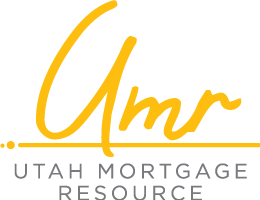You don’t need a 20% down payment to buy a home.
Forget what your parents told you. Ignore old internet articles that further spread this misinformation.
Is a 20% down payment on a home ideal? Yes. It’s right up there with having no credit card debt, and owning a reliable older car free and clear. But if you can’t swing it, you’ll just need to pay for private mortgage insurance.
What is private mortgage insurance (PMI)?
Private mortgage insurance is required on Conventional loans that do not have a 20% down payment.
You are generally expected to bring a minimum of 3 to 5% to the closing table as your down payment. The private mortgage insurance (which is a separate, third party company not connected to the lender) insures the remaining 17 to 15% in case you default on your mortgage loan.
This way, the lender is only risking lending on 80% of the loan – if it has to foreclose on your home, a loss is less likely.
You can click here for a Private Mortgage Insurance calculator from one of the big companies that provide it – Radian. Or just email me for a quote on your specific scenario at [email protected]
If you are in the position to save money by not paying mortgage insurance, then that is the obvious choice. But don’t waste your money renting instead of building equity, while home prices are rising and rising.
While you pay rent and try to save for that 20% down payment, homes in Utah are increasing in value by an average of at least 5% every year.
Don’t get me wrong, saving money is a great habit to get into! But turning your expenses (rent) into an investment (homeownership) is a work of financial art!
The minimum down payment on a Conventional Loan is 5% (even as low as 3% in some cases). The down payment on an FHA government loan it is 3.5%, while military VA loans and USDA rural loans offer 100% financing.
If your credit score is on the lower end, then an FHA loan would probably be better for you .
FHA loans are great for people with not so perfect credit scores, while Conventional loans are great for credit scores over 700.
If you’re renting a house around the $250,000 value and are paying close to $1,400 a month in rent, why would you postpone buying it in order to save anywhere from $100 – $200 a month?
By becoming a homeowner, you have the perks of:
- Building equity by having a portion of your payment applied to the principal balance owed
- The benefit of deducting mortgage interest on your tax return (rent is not tax deductible as you well know)
- Seeing your home steadily rise in value over the years.
Did I mention that for lower income borrowers there even down payment assistance programs intended to promote homeownership??
On to the good stuff.
How To Get Rid Of Private Mortgage Insurance
With FHA loans you’re stuck – per the new rules (as of June 30th, 2016), you can only drop your FHA mortgage insurance if you refinance out of an FHA loan and into a Conventional one. That of course, could change in the following years – as guidelines often do. In the past, FHA mortgage insurance automatically dropped after 5 years.
Removing PMI (Private Mortgage Insurance) on Conventional loans –> whole different story.
BY LAW, you can request your lender to drop the private mortgage insurance once you have reached 20% equity (also known as 80% loan to value). Just make sure you’re not late on any mortgage payments, otherwise you lose all rights to make demands.
For example, let’s say you bought a home for $250,000 and made your 5% down payment. Once your loan balance reaches $200,000 (which is 80% of the initial purchase price) – you can ask for the private mortgage insurance to be removed.
I’ve heard of multiple loan officers from local banks telling borrowers that they have to wait at least one year, which is either ignorance or greed (they don’t want you paying down your loan faster because the bank wants to collect as much interest as possible). Don’t take my word for it – read this official article on Consumer Finance.
If you come into a chunk of money (or maybe you save it), you can (at any time) apply it towards your principal loan balance and ask that the private mortgage insurance (PMI) be removed.
If you don’t ask, lenders still have to remove the private mortgage insurance by law once your equity reaches 22% (also known as 78% loan to value).
If you’re dealing with a really difficult bank that refuses to remove the private mortgage insurance until your make one, two or five years of scheduled mortgage payments (whatever ridiculous number they come up with) – direct them to read these Fannie Mae guidelines, particularly paying attention to the section below:
You might need to refinance and take your business somewhere else if they still won’t budge. Or look into filing a complaint with Utah DFI.
Note that a new appraisal MIGHT be required to insure that the property value hasn’t dropped since the loan was first originated. Don’t order the appraisal before talking to the lender – they might have a list of approved appraisers.
Sometimes letters from 3 different real estate agents regarding current value of the property MIGHT BE ACCEPTED instead of an appraisal.
Another option to get rid of your private mortgage insurance
Let’s say you make a 10% down payment, and you buy a house that already has a bit of equity. The lender won’t care about the equity when doing your loan – the loan to value is calculated based on the lower of purchase price and/or appraisal value.
So your loan to value will be 90% (10% equity), even if using the appraisal value it would be more like 85% loan to value (10% down payment + 5% instant equity because you got such a good deal and the appraisal came in higher than the purchase price).
A year passes and you’ve made all your payments on time. The home has gone up in value by 5%, so if you were to have a new appraisal, you could now show 20% equity and have the private mortgage insurance (PMI) removed.
The current lender is still using the original loan to value, so technically, you only have about 15% equity (assuming your principal loan balance was paid down by around 5% during this time – maybe you made some extra payments).
NO, YOU DON’T HAVE TO REFINANCE YOUR LOAN IN ORDER TO GET THE PRIVATE MORTGAGE INSURANCE REMOVED. Don’t lose that awesome low interest rate I got you in back in 2016..! 😉 😉
Again, don’t count on your local bank loan officer to give you this idea. What he/she wants is for you to refinance your loan with them, so they can make more commission. The bank will also make more money in interest, since you would be restarting the 30 year clock on a fresh refinance (..did I mention you pay the most in interest in the first years of a mortgage loan??).
Pay attention and take notes, here it comes.
Contact the lender directly. Tell them you’ve been great about making your mortgage payments on time, and that you’ve made extra payments and your home value has increased. You’d like to have a new appraisal done and the private mortgage insurance removed. You have a copy of the original appraisal if they want, showing the property has already appraised for the higher amount a year back (in case anyone has concerns about a suspicious increase in market value that might be fraudulent – remember the mid to late 2,000’s?). Put it in writing, give them time to process. Voila!
I’ve had borrowers successfully drop their mortgage insurance this way, and the lender has NEVER TOLD THEM NO. Why risk to have the borrower refinance, and pay that nice interest every month to someone else??
If you’re adamant about saving up that 20% and avoiding private mortgage insurance, why not do it while you’re building equity, saving on taxes, and your home is going up in value?
Here is another mind boggling fact that other loan officers don’t know or don’t want to tell you.
RECASTING your loan
A lot of lenders out there will offer the recast or re-amortization option. Meaning you can pay a chunk of money towards your principal balance, and then have your monthly mortgage payment re-calculated based on the new loan amount but with the same interest rate.
Example:
Let’s say you found your new dream home. You’re selling your current home and buying this new one. Your old home won’t sell before the settlement on the new home so you’ll have 2 loans for a while.
You took out a $300,000 brand new loan at 3.5% interest and you’re paying private mortgage insurance.
Your monthly principal and interest payment is $1,347.13 + the escrow for property taxes, hazard insurance and the monthly private mortgage insurance.
Your old home sells and brings you $100,000 profit.
You now talk to the lender and ask for a recast, as well as the private mortgage insurance removal. $100,000 gets applied to your principal balance, so your loan is now $200,000. Your new principal and interest payment goes down to $898.09 + property taxes and hazard insurance, and you keep your 3.5% interest rate.
Whooo-hooo! The loan officer that gave you this information is pretty awesome, isn’t she? 🙂
Feel free to contact me with any questions, and I’ll be happy to answer them, or provide you with a personalized quote tailored to your situation.
Purchasing a home is not for everyone. But IF and WHEN you do it, it will likely be one of the best financial decisions of your life.
For a same day Pre-Qualification letter, (your Real Estate Agent will want to see it before he/she takes you house shopping) please use my secure online application or call me at 801-473-3154. You can also email me at [email protected]
I’m a millennial, so if texting your questions is an easier option for you – feel free to do so.
Please take a moment to share this article with friends and family that are wasting their hard earned money on ever increasing rents. They’ll appreciate you, and so will I.

